

Matt Campbell
2026 MG U9 review
4 Hours Ago
It's the featherweight hot hatch duel you've all been waiting for. The Fiesta ST cult hero takes on the i20 N – who takes the crown?

Marketplace Editor
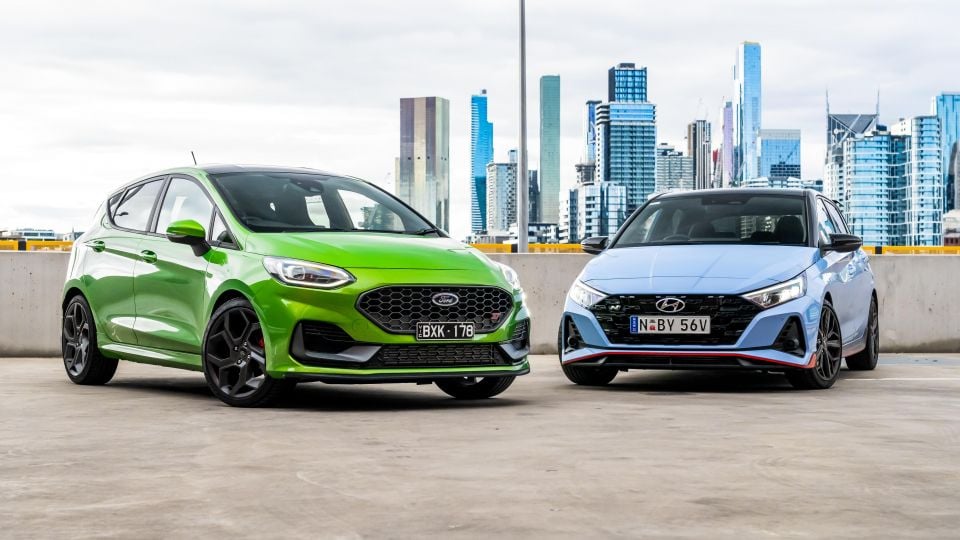

Marketplace Editor
This is the one the enthusiasts have been waiting for – and very specific enthusiasts at that.
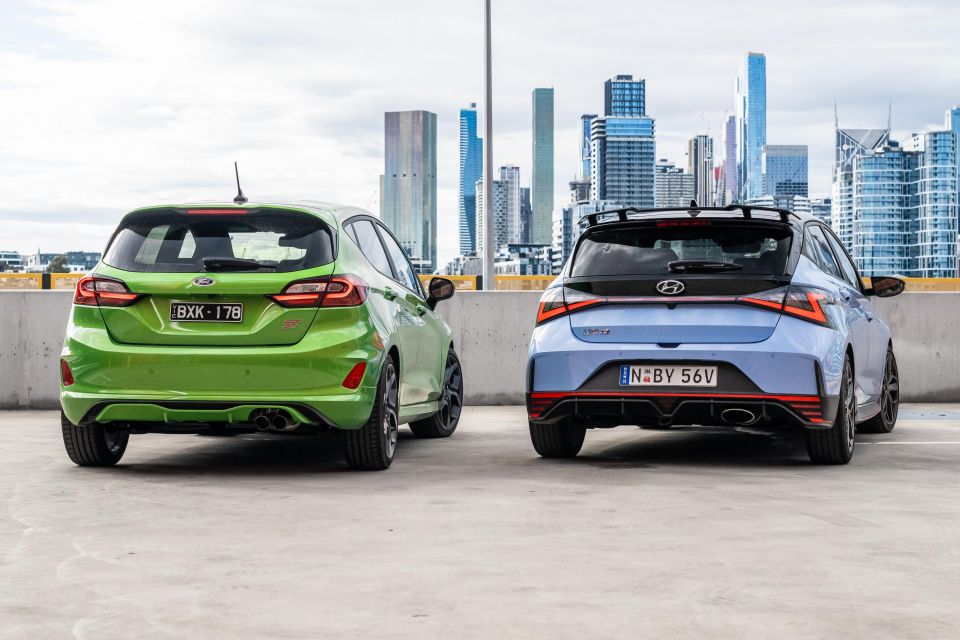
Light-segment hot hatches have cult followings in Australia and particularly in markets like Europe and the UK which favour more compact designs, and arguably none more so than the Ford Fiesta ST… or FiST, as some like to call it.
Ford of Europe knows how to make a humble city hatchback steer bloody well, and the latest – and last – Fiesta ST backs that up with turbo power and a raft of performance-themed enhancements.
That’s all about to end, however, as Ford has not only discontinued the Fiesta ST (and larger Focus ST) in the Australian market, but the Fiesta as we know it will cease production in 2023 after 47 years on sale. Very sad indeed.
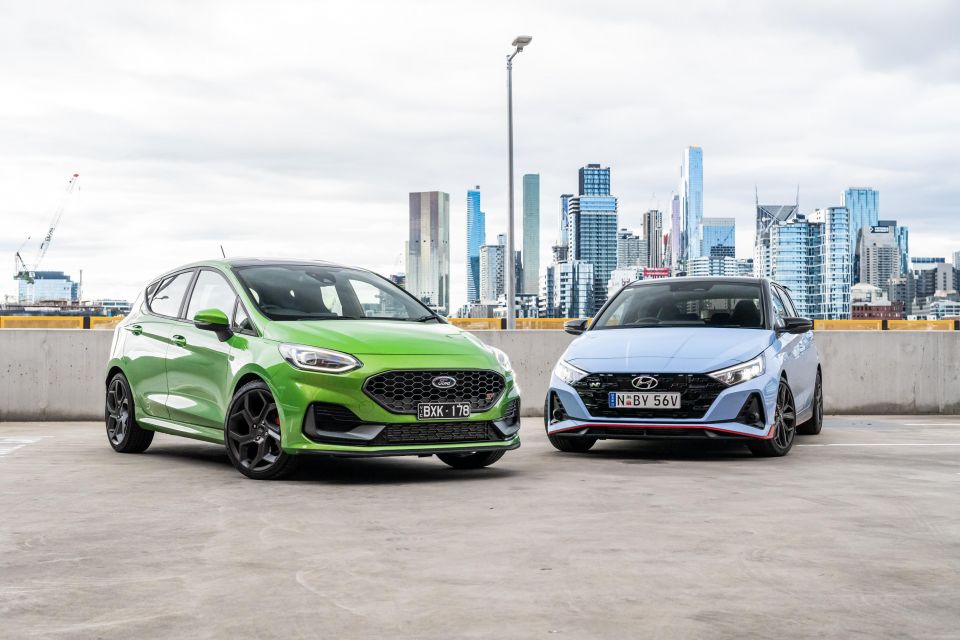
So, in the blue corner we have the face of the future in this segment; the Hyundai i20 N, again the product of a Euro regional office for a global brand, with a focus on affordable thrills.
Having covered the launch of the Korean-badged corner carver both on road and on track – and being thoroughly impressed – it felt fitting that I finally deliver on my promise on comparing Hyundai’s smallest N model with what arguably is regarded as the junior hot hatch benchmark.
So, we have the last version of a legend with the first of a potential new cult hero – who gets the gong?
When it was available to order, the Fiesta ST was priced from $33,490 plus on-road costs, which is actually quite affordable relative to its rivals.
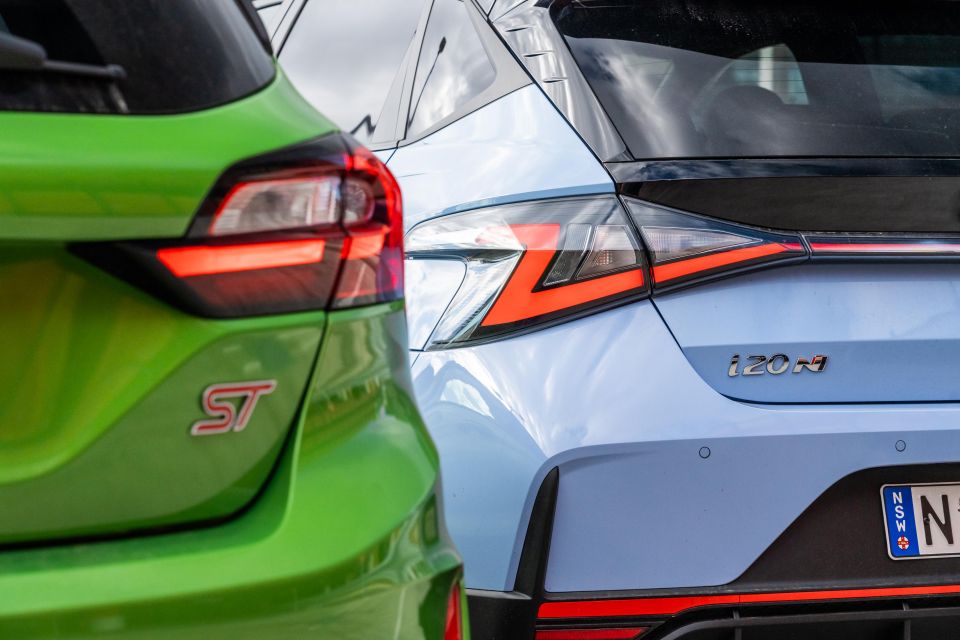
The Hyundai, meanwhile, has jumped a little since launch – now $35,990 before on roads, or $1500 more than the Ford.
Orders for the Hyundai were also closed as recently as September, as the company worked through a significant backlog with crippling supply restrictions, with prospective buyers quoted a wait time of over 12 months.
As tested, the Fiesta ST seen here features sick Mean Green metallic paint ($650), while our i20 N test car wears an optional Phantom Black contrasting roof ($1000).
Fiesta ST highlights:
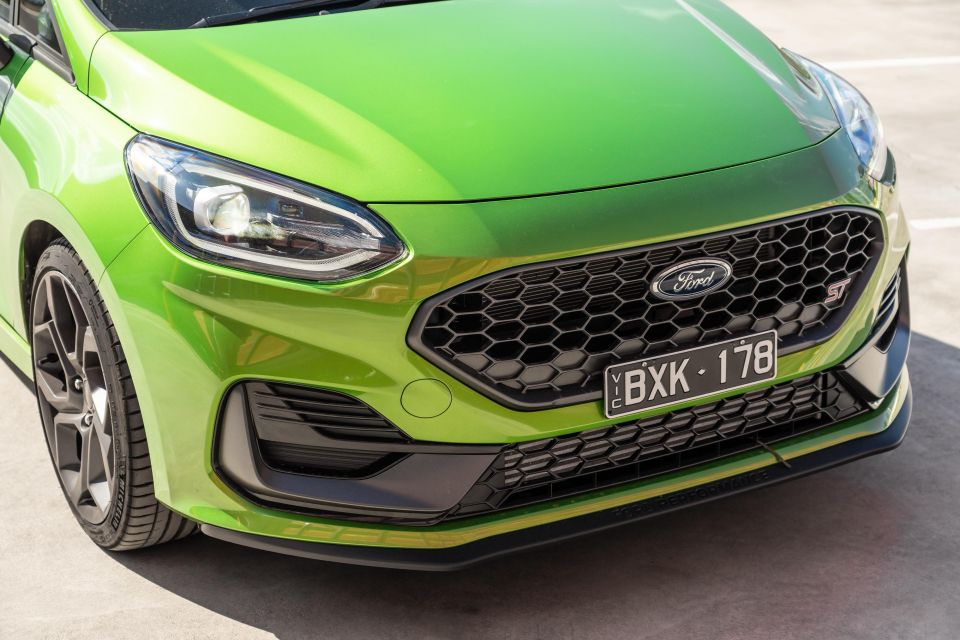

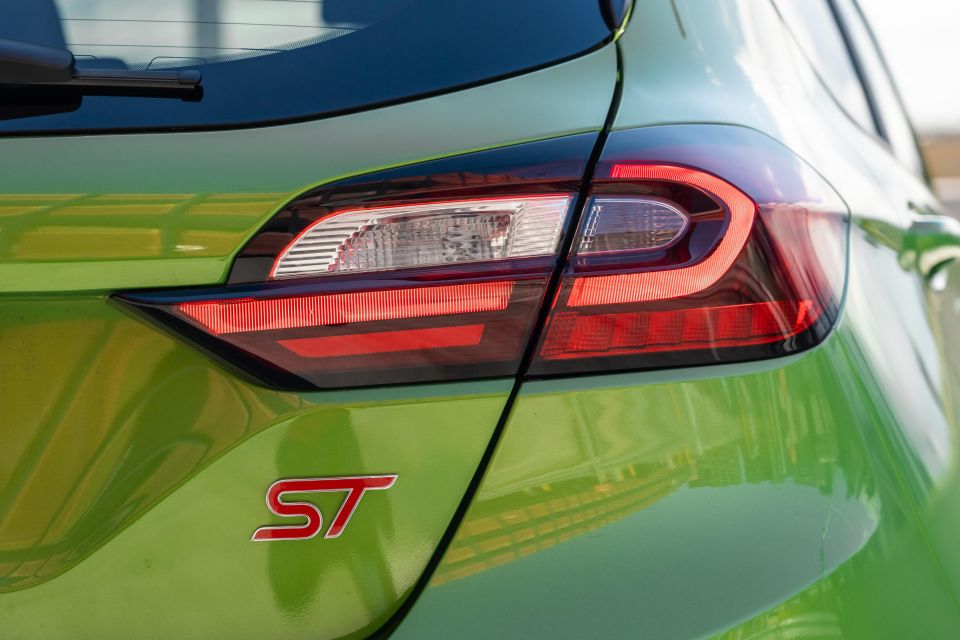
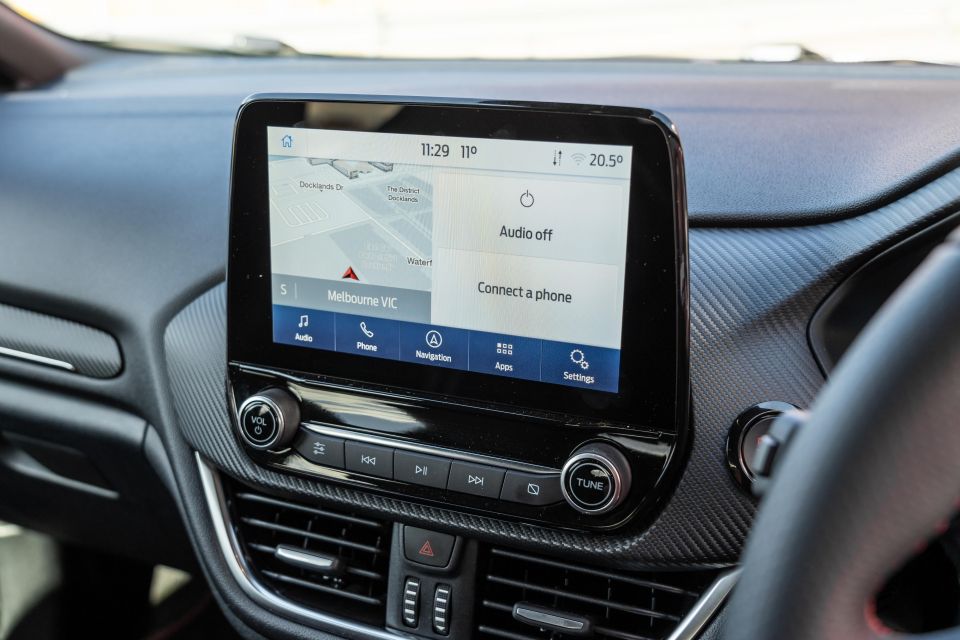
It’s worth noting an early batch of Fiesta ST’s arrived in Australia missing the 10-speaker B&O Play premium audio system (replaced by a six-speaker un-branded unit).
Some 44 of the 73 affected units had been allocated to customers, and said customers were offered a refunded deposit and order cancellation, a new build with the better audio system, or a $500 cash payment.
i20 N highlights:
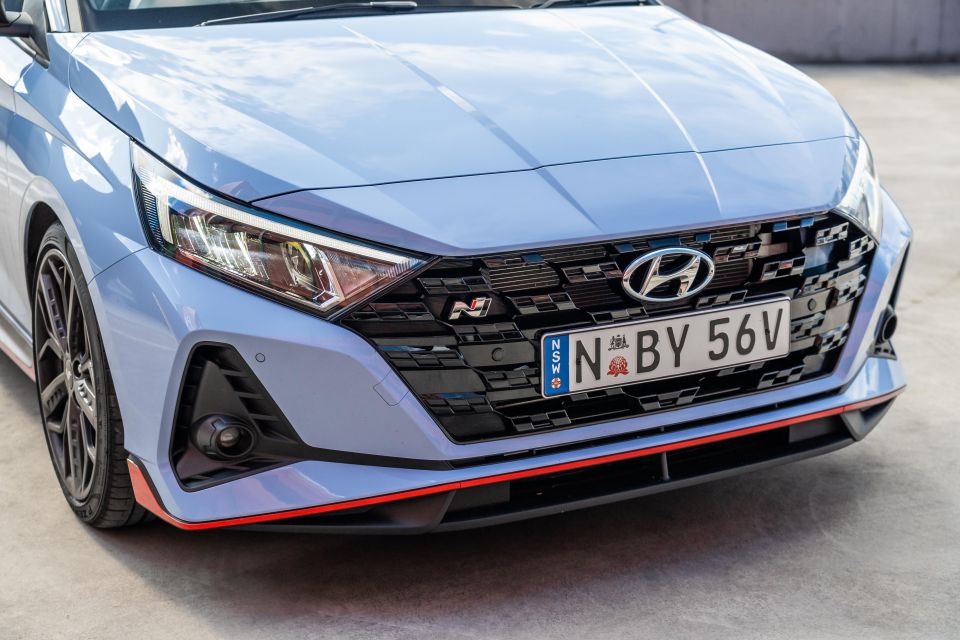

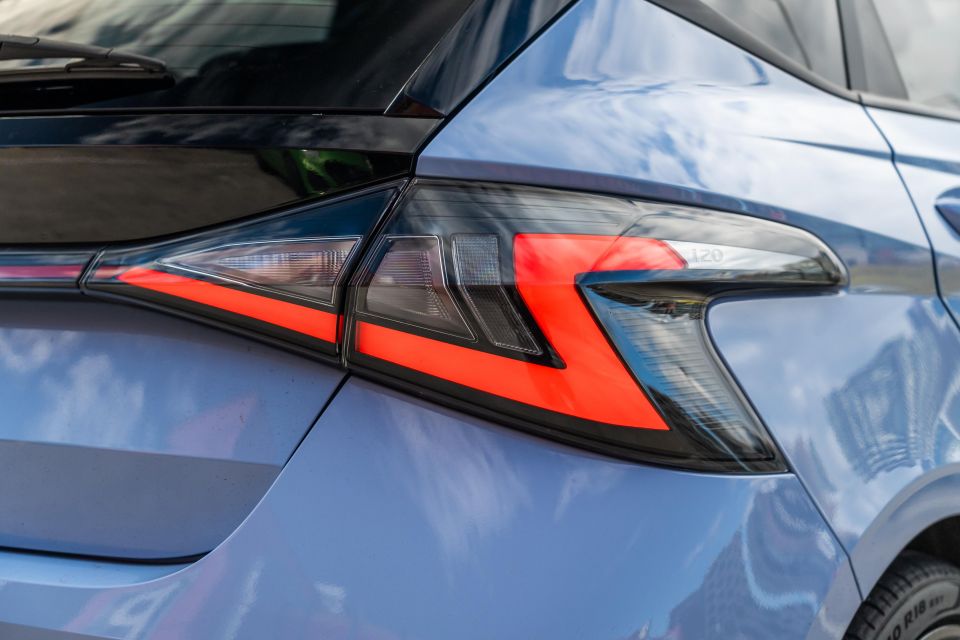
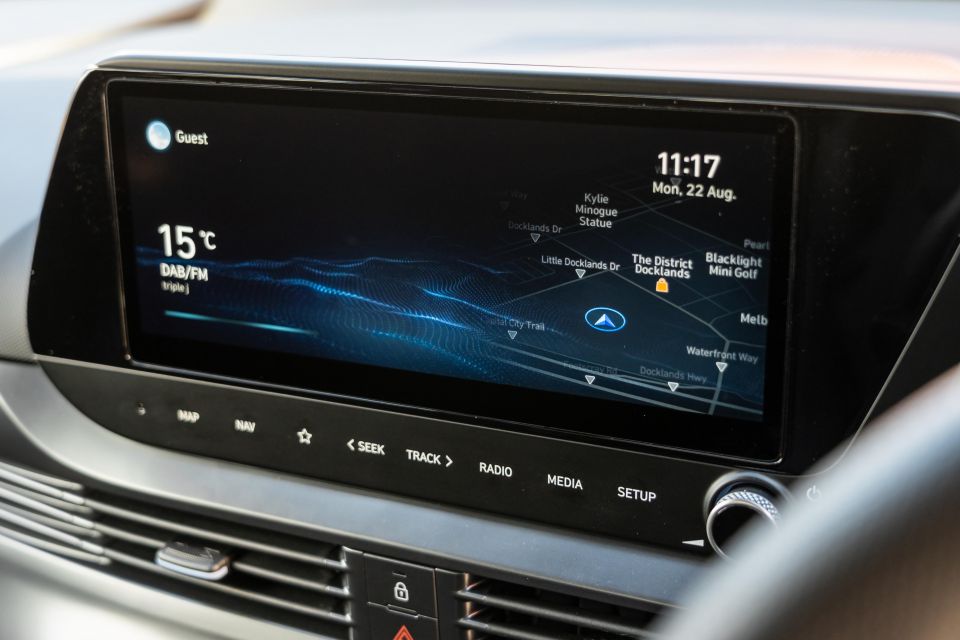
Fiesta ST

The final generation of Fiesta doesn’t wear an ANCAP safety rating, though non-ST models in Europe wear a five-star Euro NCAP score based on 2017 testing.
It scored 87 per cent for adult occupant protection, 84 per cent for child occupant protection, 64 per cent for pedestrian protection and 60 per cent for safety assist. Note this is based on older criteria.
Standard safety features include:
Ford Australia removed blind-spot monitoring and rear cross-traffic alert for the 2022 model-year, as a result of semiconductor-related component shortages.
i20 N
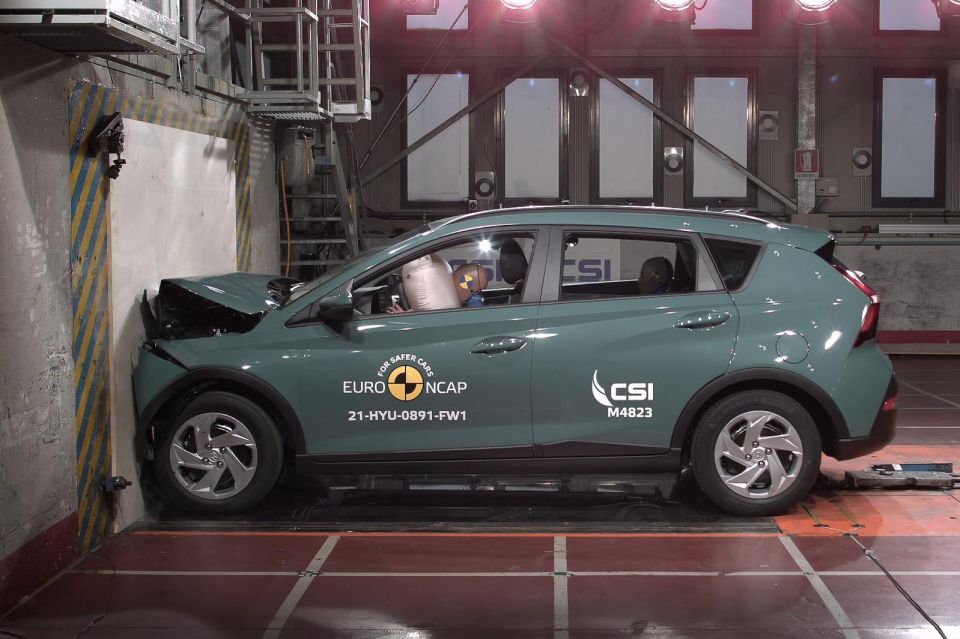
The current i20 is currently unrated by ANCAP, but the non-performance models available in Europe wear a four-star Euro NCAP safety rating based on 2021 testing of the related Bayon crossover.
Category scores include 76 per cent for adult occupant protection, 82 per cent for child occupants, 76 per cent for vulnerable road users and 67 percent for safety assist.
“Based on data reviewed by Euro NCAP, the [i20 and Bayon] can be considered identical as far as safety is concerned, and the rating of the Bayon can be applied also to the i20,” Euro NCAP says in its report.
Euro NCAP noted in the accompanying media release the Bayon’s four-star result, while “credible”, was partly down to it lacking a front-centre airbag, therefore hindering its occupant to occupant protection in the event of a side impact.
Standard safety features include:
Fiesta ST
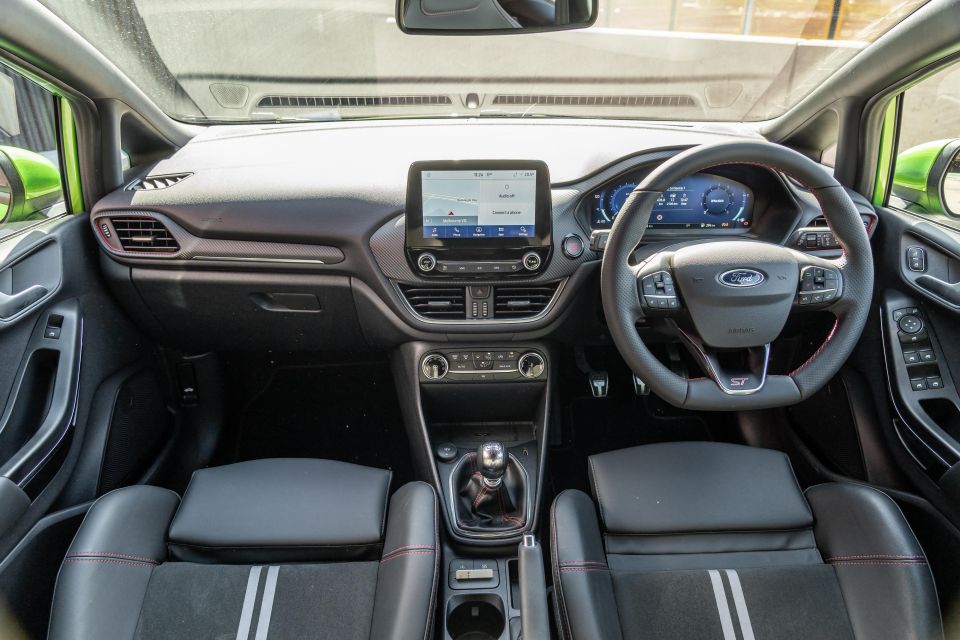
Being a facelift, the last FiST’s cabin hasn’t changed much since this generation lobbed locally in 2019. That’s not to say it’s a bad thing.
For the light class in general the Fiesta has a higher-end, Germanic feel; from the soft-touch dashboard, high-quality upholstery on the seats and steering wheel, and the pops of red stitching throughout the cabin.
Build quality feels very solid, and the more conventional approach to interior design and layout will no doubt have broader appeal than the more angular dashboard of the Hyundai.
Ahead of the driver is a 12.3-inch digital instrument cluster seen in other Ford models, and unfortunately unlike the i20 N it doesn’t really feature any ST-specific design elements or extra layouts – though Track mode brings a slightly different take on the darkened Sport display.

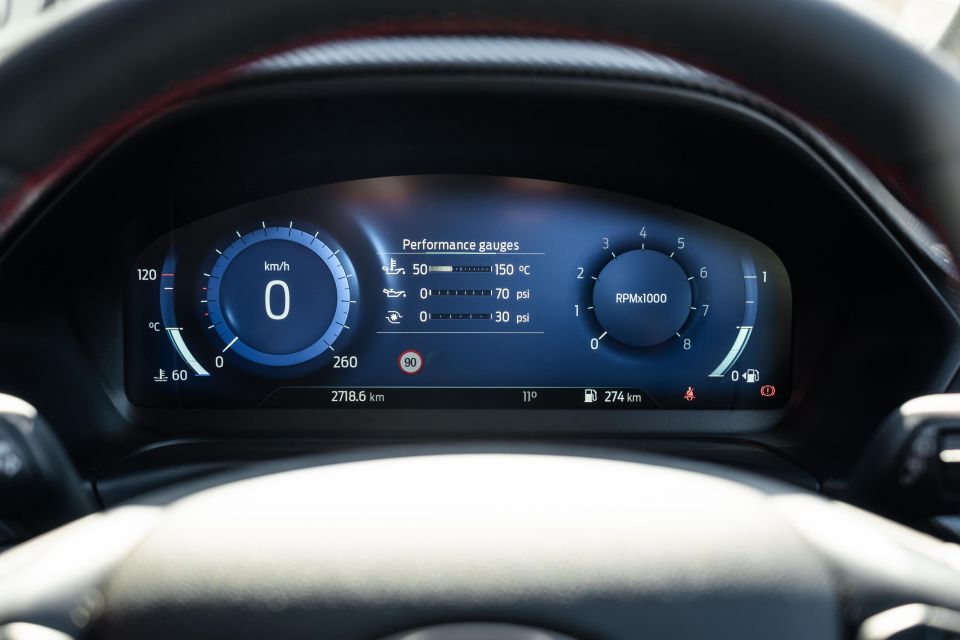
A sportier skin exclusive to the performance variant would have been a nice addition, and it lacks the configurability of rival units.
It does, however, show you rev and tacho dials prominently, and the centre section can be configured to show various trip computer data and assist system widgets. No maps, however.
The 8.0-inch Sync 3 touchscreen carries over for the facelift, but it’s still a very good system that’s easy to use and responds well across the board.
While the smaller display can’t match the Hyundai’s 10.25-inch unit for resolution and wow factor, it’s a well-featured system including embedded satellite navigation with FordPass Connect online features, including live traffic updates.
There’s also wired Apple CarPlay and Android Auto, though the placement of the USB port and small cubby means those with larger phones are frustratingly forced to have cables and phones tangling or nudging the gear shifter.


Ford ditched Recaro for the facelifted Fiesta ST and instead put in its own in-house Ford Performance seats. Dare I say, these are better both in design and execution.
The chunky look and heavy bolstering really doesn’t look far off the front chairs you’ll find in the latest BMW M products, and they’re supremely comfortable for daily use. Even my voluptuous frame was snugly supported without feeling like a creepy hug from a stranger at a nightclub…
I often found the Recaro seats in the previous Fiesta ST and Focus ST were too heavily bolstered around the mid-section of the torso, so this is a welcome improvement for everyday comfort.
Likewise the steering wheel is a quality item. The chunky rim with flat bottom and perforated leather with red stitching really pops. The multifunction switchgear is familiar from other Fords, and it all works fine as you’d expect.
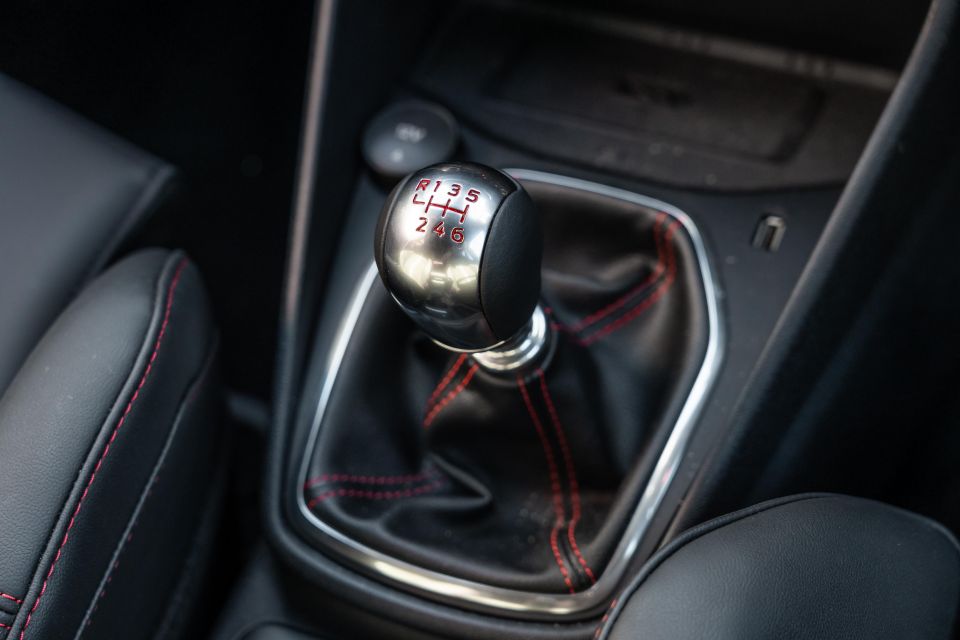
The metal-accented manual gearknob is another highlight. It looks and feels like a solid item, and as we’ll get to in the driving impressions, it’s a lovely thing to operate on the move.
Like the rest of the cabin there’s flashes of red stitching as well as the gate pattern finished in red on the knob.
Ahead of the shifter as mentioned earlier is a single USB port which ergonomically isn’t my favourite placement, and there’s a wireless charging pad for your smartphone at the base of the centre stack. A 12V socket resides here, too.
We’ll touch more on the shift action and feel in a bit.
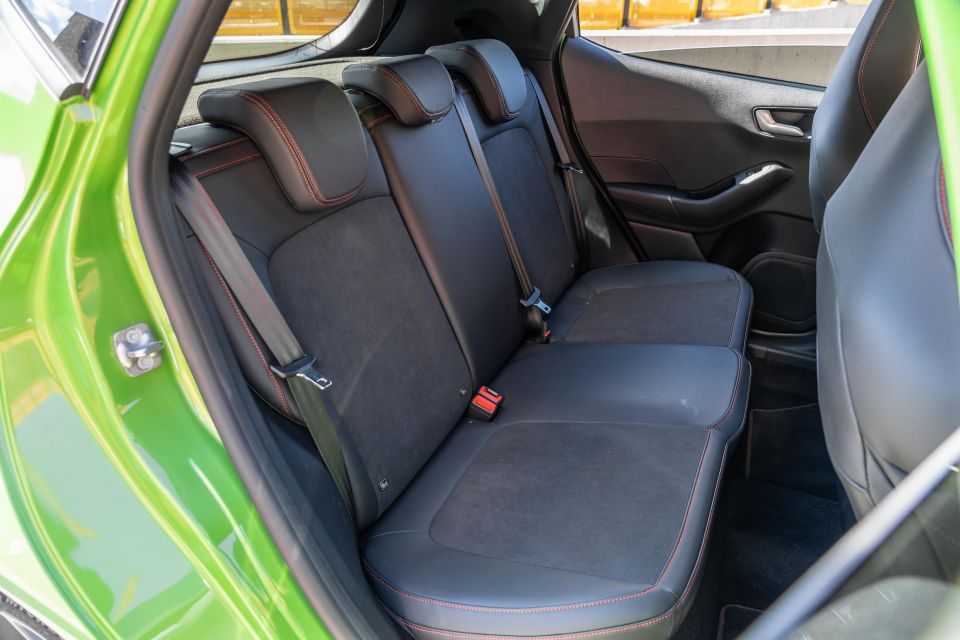
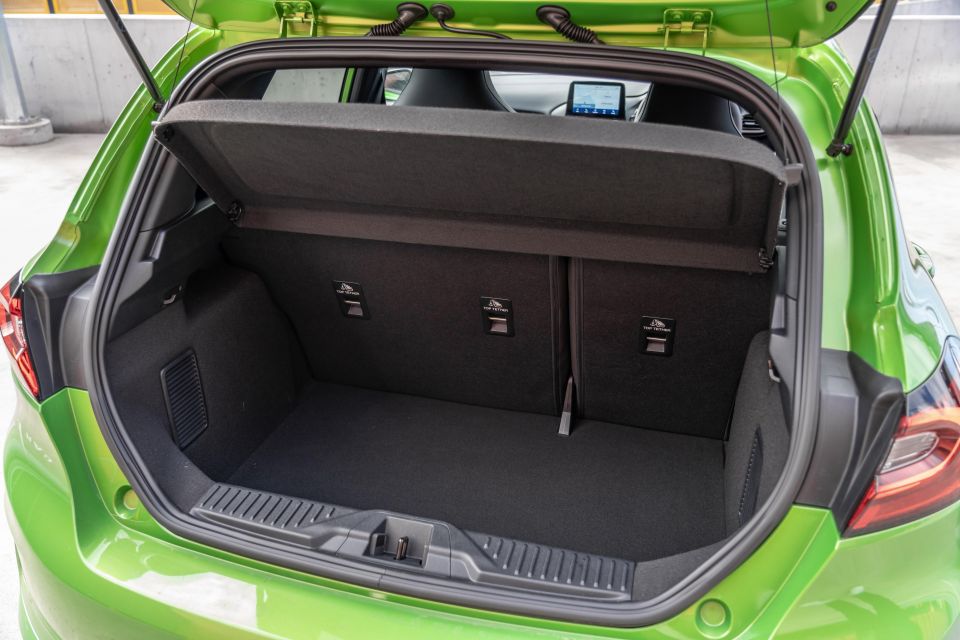
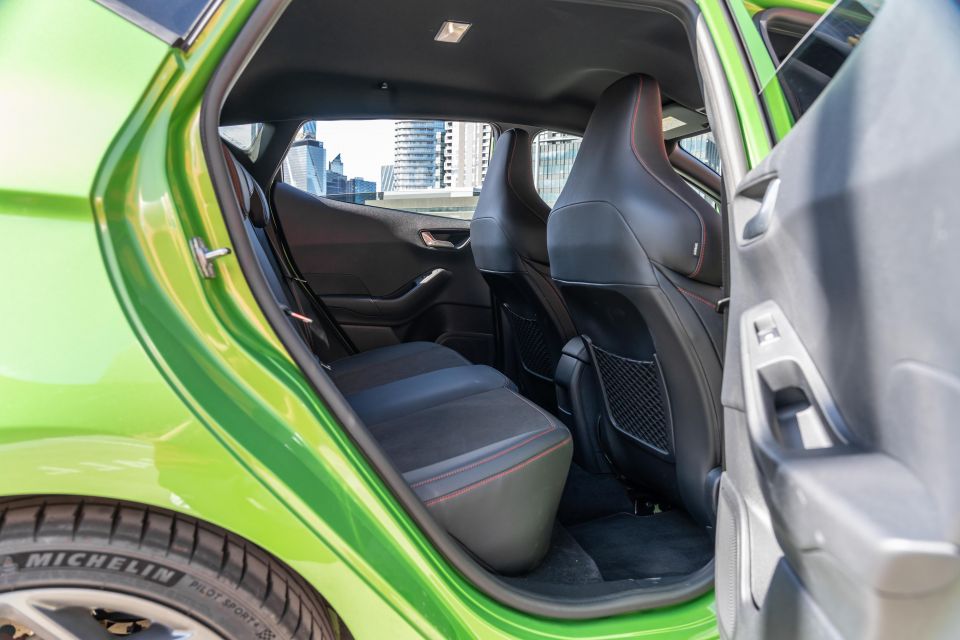
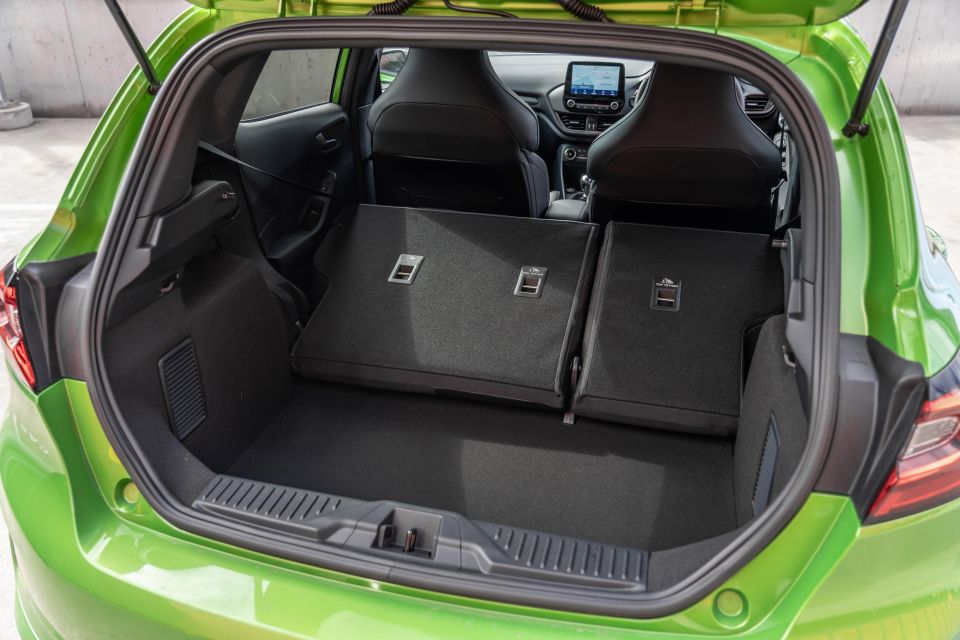
Being a light-class city hatchback, the Fiesta was never going to have limousine levels of passenger accommodation. That said, the latest Fiesta is tight in the back for the segment – like the Puma that shares its platform – to maximise luggage capacity.
I wouldn’t be comfortable behind my own driving position; largely down to limited knee and leg room, and there’s little in the way of amenities. Best left for occasional use or young kids.
Further back there’s a 311-litre cargo area which expands to 1000 litres with the second row folded. It’s on par with the Hyundai, which quotes 310L/1123L.
A space-saver spare lives under the boot floor.
i20 N
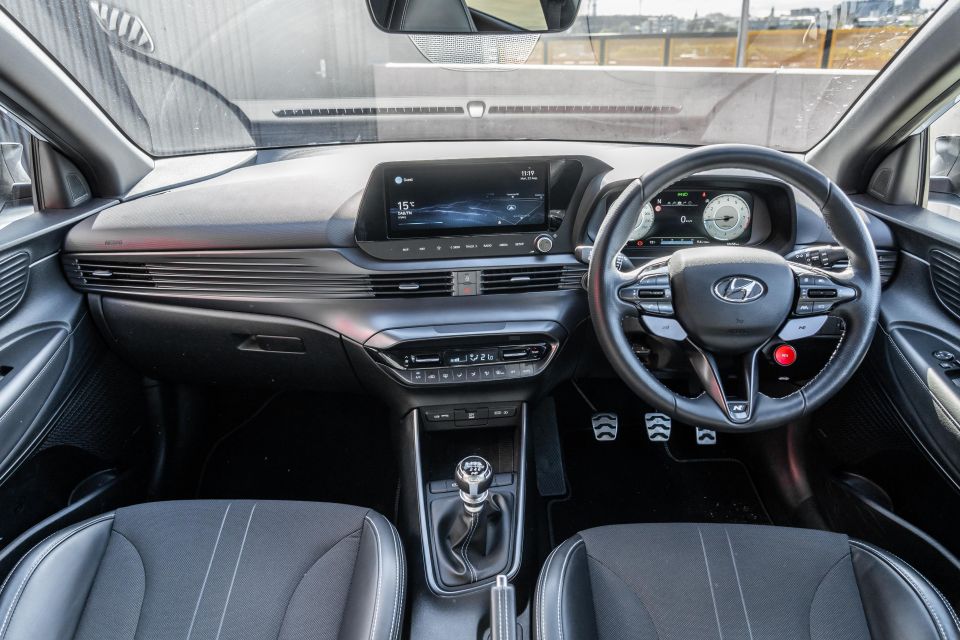
Where expert car reviews meet expert car buying – CarExpert gives you trusted advice, personalised service and real savings on your next new car.
As we’ve come to expect from the Korean brand, the i20 N is easily one of the best in class for infotainment and display technology.
First thing you notice when you hop in are the dual 10.25-inch high-resolution displays that are common to various models in the Hyundai-Kia stable, one for the instrument cluster and one for the infotainment touchscreen.
The chunky steering wheel has been lifted straight out of the larger i30 N, bringing steering-mounted drive mode buttons as well as a bright red ignition start button. It’s all very racy, and more ostentatiously so compared to the Ford.

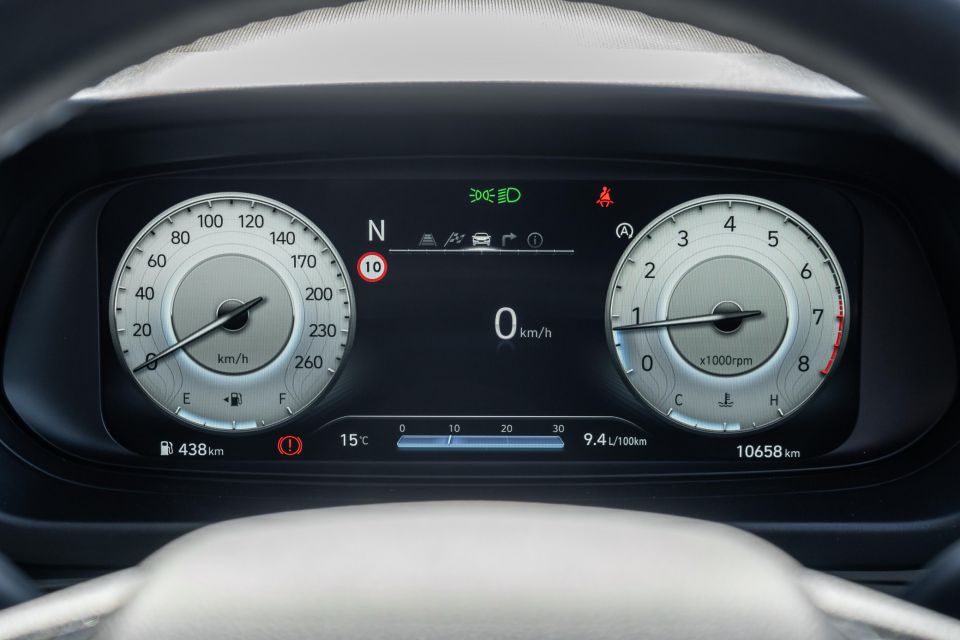
If you flick the N Mode switch you’ll see the cluster transform from the standard Hyundai layout to an N-specific display, incorporating a large centre tacho dial with flame-like animations, flanked by your choice of several widgets including a G-force meter, temperature levels as well as a boost gauge.
The central touchscreen is as about as kitted out as the Ford’s, though lacks its rival’s online services and remote functionality.
Still, there’s native satellite navigation, wired Apple CarPlay and Android Auto, as well as DAB+ radio. Essentially matching the Ford.
Hyundai has also added a slew of N-specific features, including a lap timer with various Australian track maps pre-loaded with GPS tracking, and a bunch of widgets to adjust the vehicle’s various settings. It’s pretty freaking cool.

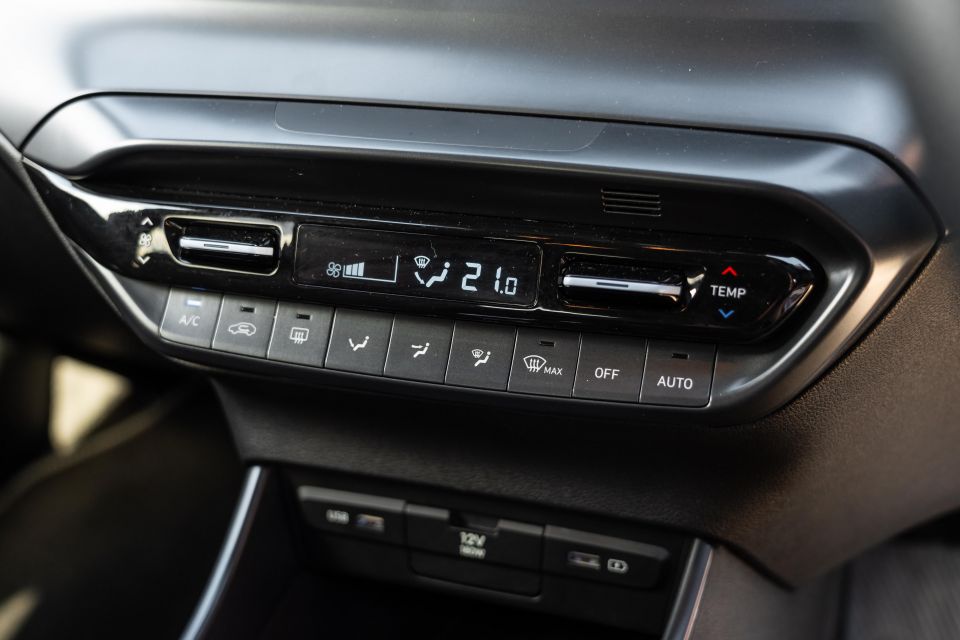
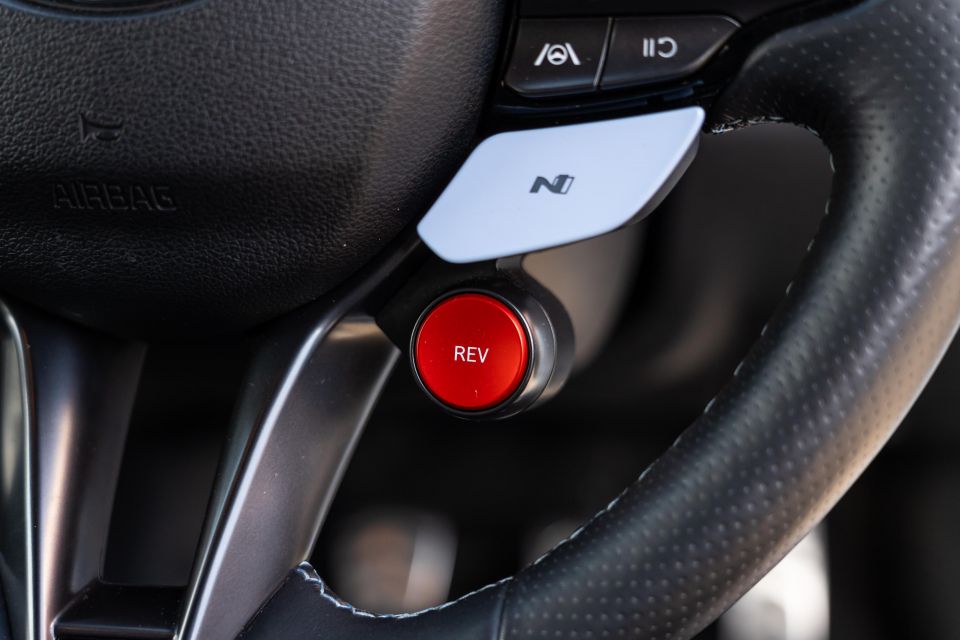
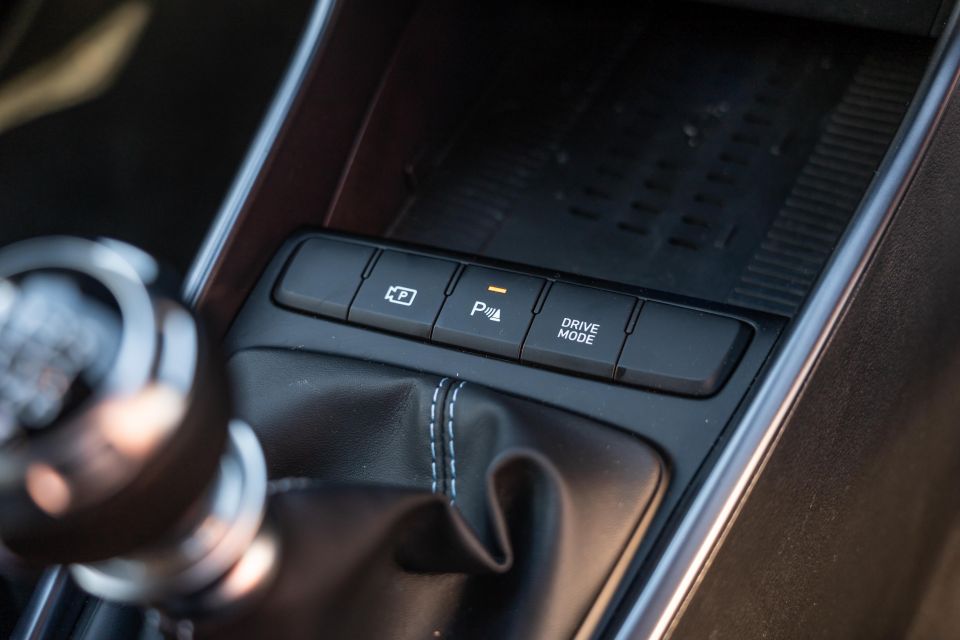
While the interior tech is excellent given the class and price point, the i20’s cabin execution feels a step below the Ford’s in terms of quality.
Sure the N sports front seats are comfortable and supportive while looking cool, but they lack the drama and high-end feel of the Ford’s leather/suede units.
Material quality doesn’t seem to match the Blue Oval either. Everything is hard plastic, save for the centre armrest and door inserts. Sure, it’s par for the course at this end of the market, but given the Ford actually feels quite nice inside, the Hyundai falls a little short here.
I will say, the requisite touchpoints all mostly feel up to scratch. In particular that lovely N leather steering wheel, with a plump, squish rim trimmed in soft perforated leather. It wouldn’t look out of place in a much dearer vehicle.
The N gear knob doesn’t feel as solid or substantial as the Ford’s, but it does the job.
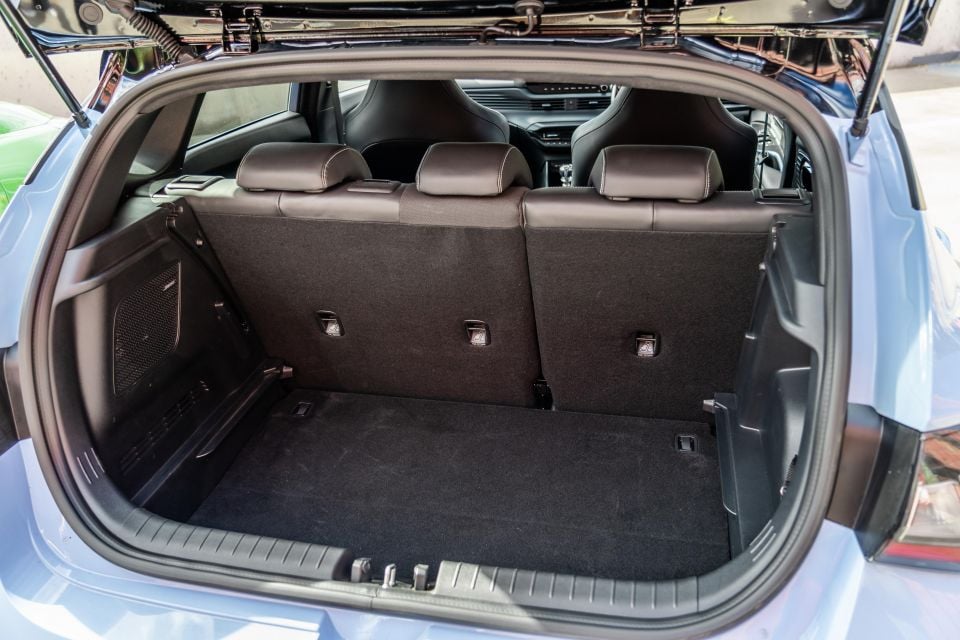
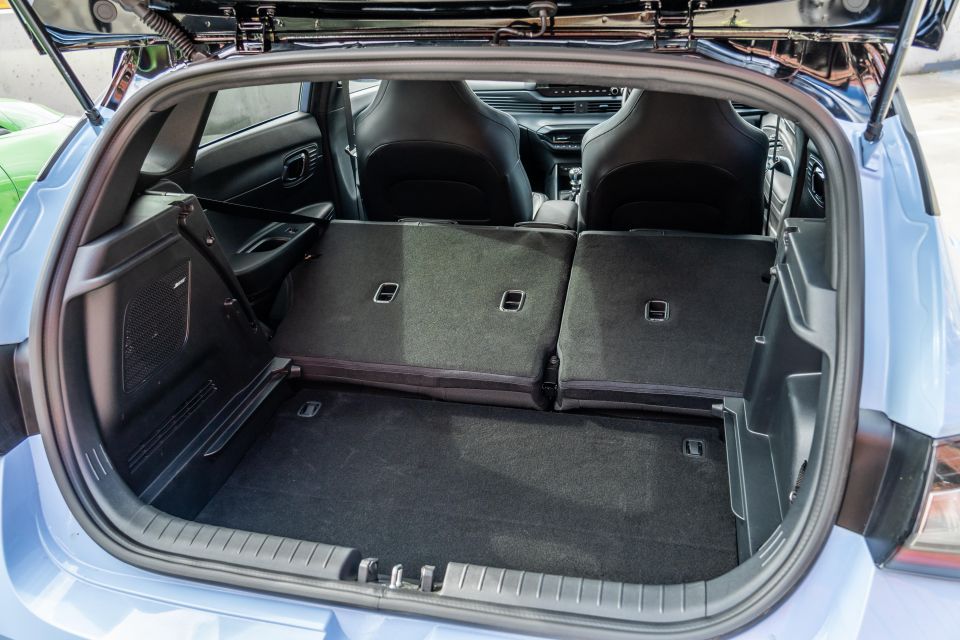
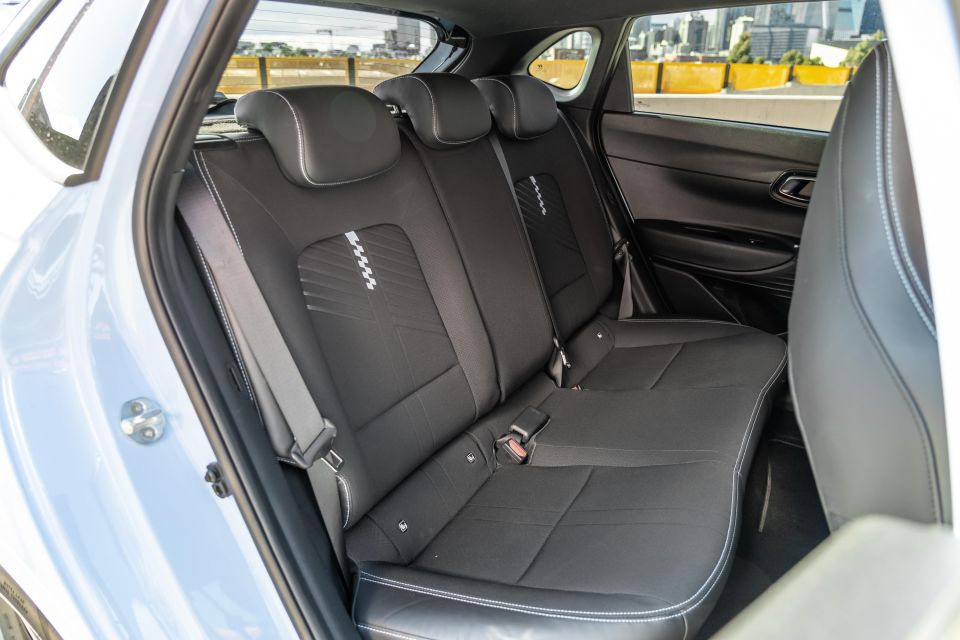
If you’re planning on taking friends along on your hot hatch drives often, the i20 feels better suited to carrying passengers regularly.
The cabin feels notably wider than the Fiesta’s, and rear seat accommodation is more spacious for adults. Leg and knee room are notably more plentiful than the Ford, and head room is competitive. As is standard fare, there are ISOFIX anchors on the window seats and top-tether points across the backs of all three back seats, like the Fiesta.
As noted earlier the i20 N’s luggage capacity is line ball with the Fiesta with the rear seats in place (311L v 310L), though there’s an extra 123 litres (1123L v 1000L) in two-seat configuration in favour of the Hyundai.
Like the FiST, there’s a space-saver spare wheel under the boot floor.
Fiesta ST

Power in the FiST comes from a 1.5-litre EcoBoost three-cylinder turbo petrol engine, tuned to deliver 147kW (6000rpm) and 320Nm (4000rpm).
Drive is sent to the front wheels via a six-speed manual transmission, and a mechanical front limited-slip differential.
In terms of performance, Ford claims the FiST will dash from 0-100km/h in a brisk 6.5 seconds, with the help of Launch Control.
Ford quotes combined fuel economy of 6.3L/100km on the combined cycle, with 95 RON premium unleaded the minimum fuel rating. The fuel tank measures 45 litres.
i20 N

The i20 N features a 1.6-litre T-GDi four-cylinder turbo petrol engine, with quoted outputs of 150kW (5500-6000rpm) and 275Nm (1750-4500rpm).
There’s also an overboost function that increases maximum torque to 304Nm under full throttle between 2000 and 4000rpm. Drive is channelled through a six-speed manual transmission and a Torsen mechanical limited-slip differential on the front axle.
Additional features include Launch Control, an auto rev-matching function for the manual transmission, and a three-mode stability control system like other N cars. Hyundai claims the i20 N can dash from 0-100km/h in 6.2 seconds, and hit a top speed of 230km/h.
Interestingly, the i20 N’s powertrain is Euro 6-certified, and features fuel-saving idle stop/start technology. Official fuel use is quoted as 6.9L/100km on the combined cycle, while the fuel tank measures 40L. Hyundai says you can run the i20 N on cheaper 91 RON regular unleaded and E10 fuel.
Fiesta ST
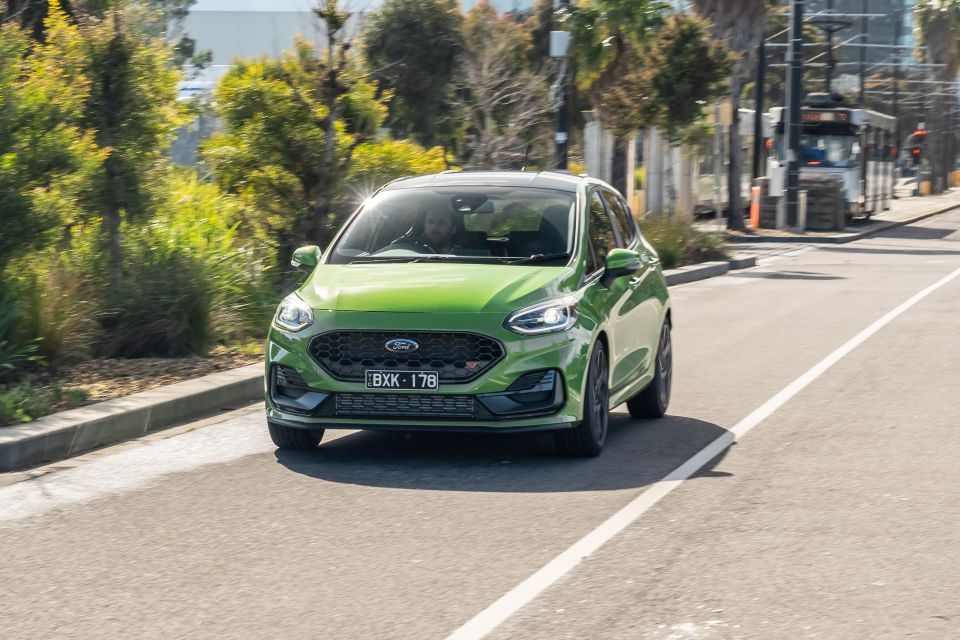
Now, for the fun part.
This was my first proper go behind the wheel of a Fiesta ST, so having spent plenty of time with the i20 N previously, I wanted to see if the little green Ford lived up to the hype journalists around the world have given it.
Needless to say, it wasn’t long before I realised what they’ve been talking about.
Right from the get-go I noticed the Fiesta has a very mature, well-rounded feel to it. It’s got character but it’s not brash; it’s got a fun exhaust note but it’s not unrefined; it’s firmly sprung but well damped.
That’s even before we even encountered any twisties. It’s almost a bit Volkswagen-y by feeling well-suited to everyday driving – which let’s face it is at the core of the hot hatch concept anyway – but there’s a layer of polish that I’d argue the Hyundai lacks.
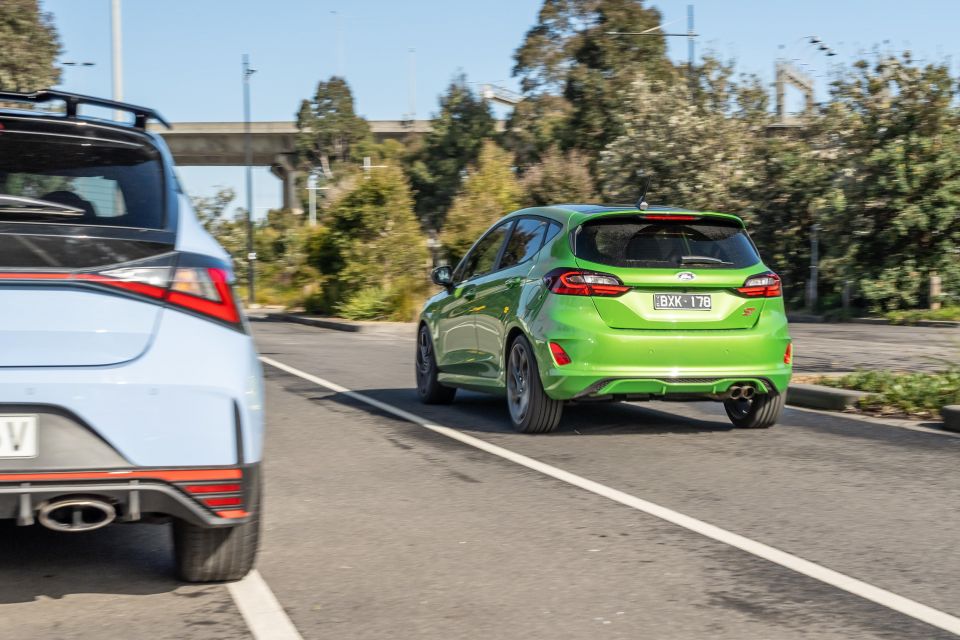
Having a three-cylinder engine as opposed to a four-cylinder means the FiST has a distinctive engine note that’s gravelly and characterful, and despite being down a cylinder and 100cc in displacement it doesn’t feel underdone compared to its Korean-branded rival, though it is a little slower.
That said, the high torque peak means there’s some lag down low and then it’ll shove you in the back as the turbo comes on boost – quite old-school – and it pulls right up until the redline; something a lot of small turbo engines can’t manage. It means you’re more inclined to rev it out, which is a fun trait, and it’ll appeal to those that like the challenge of working with a narrower sweet spot.
The manual transmission is typically Ford, in that both the shift action and clutch pedal have a heavier weighting and a more mechanical operation. It’s old-school in the best way, and it feels really rewarding as you dial things up.
Flick it into Sport mode and the exhaust starts popping on overrun, and the digital instrument cluster darkens with red accents. It’s got fixed suspension so it rides the same, but Ford has struck a nice balance here as it usually does.
I coerced (not really) colleague Scott Collie into joining me driving these two pint-sized hotties back-to-back up through the hilly mountain roads near Healesville, which gave me a chance to really sink my teeth into the dynamic behaviour of these two cars.

The first thing I noticed was that the USB port for Apple CarPlay is just in the wrong place. My phone was sliding around and the cable caught my fingers every time I shifted gears to the point I actually grabbed the wrong one – it was quickly yanked out and thrown into the passenger seat.
Other than this silly quirk, there really wasn’t much to complain about. That mature, European feeling I mentioned carries over to more dynamic stints, though unlike something like a VW GTI, there’s a bit more flair and personality baked in.
The FiST has evolved into an incredibly adept driver’s tool. It’s sure-footed, sharp to respond and well-rounded across the board, but still manages to cocoon you and add a layer of refinement so that it isn’t raw or harsh.
On the winding roads up towards Myers Creek, the Fiesta had good grip on the bumpy, undulating road surface, while the keen turn in and communicative steering meant I felt super involved. The FiST runs sticky Michelin Pilot Sport 4 rubber, with a slightly narrower footprint (205mm v 215mm) than the i20 N’s Pirelli P-Zeros.
The heavier weighting to the steering and shift action was reassuring too, even if it meant I didn’t feel quite as quick in it. The mechanical limited-slip diff up front helps get the power down as you tear through corners, by shuffling torque to the wheel with the most grip while also subtly grabbing the brakes on the inside wheel to bring it around.
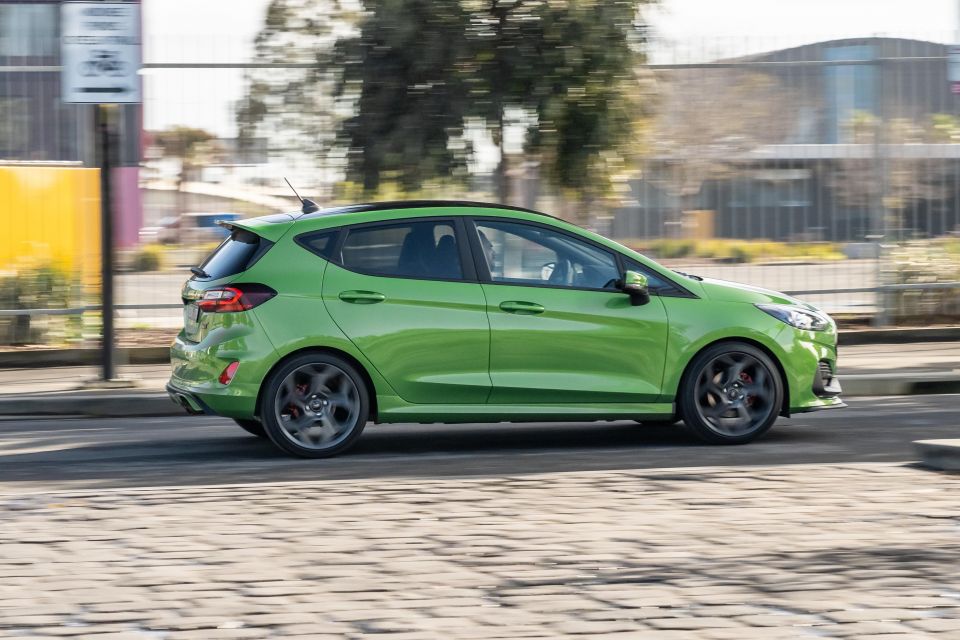
While the Ford was hard to fault, it’s taller and skinnier body and narrower tyres meant it didn’t feel quite as hunkered down as the i20 N, and the higher driving position added to the feeling of a higher centre of gravity.
Not that this is a real drawback, as you feel a bit more of natural motion which can actually add to the experience, but I felt the Hyundai was so raw and eager to keep going that it encourages you to keep pushing harder.
That’s not to say the Fiesta ST isn’t a superb baby hot hatch, it’s the furthest from it, but if you want the most raucous and track-ready product in the market, I’d probably point you in the direction of the i20 N.
But, as a Golf GTI owner myself, the Fiesta’s somewhat Germanic, excellent all-round capabilities really suited my tastes. It’s definitely the one I’d rather drive to work or go on a road trip in.
i20 N
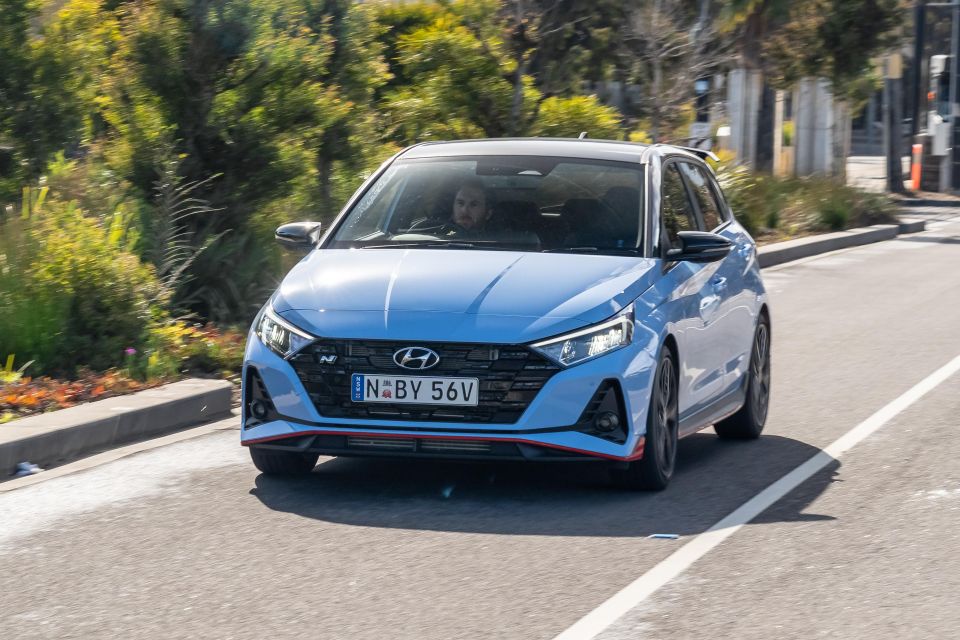
Next up is the Hyundai, and boy does it feel different right away.
Hyundai’s N Division has a core philosophy incorporating three pillars; Corner Rascal, Everyday Sports Car and Race Track Capability. It won’t take you long to see just how much the i20 N lives up to those ideals.
From the get-go the i20 N feels like an angry little thing that is itching to go as fast as you’re willing to go. There’s a high-pitched bark from the turbo four out the variable sports exhaust, and it has a low-slung feel that almost makes the Fiesta feel closer to a crossover.
You’re more inclined to leave the i20 in its N Custom setting. The configurable drive mode allows you to have various aspects of the car as hardcore or as relaxed as you want. My typical setting is to make exhaust sound LOUD, and leave everything else in Comfort.
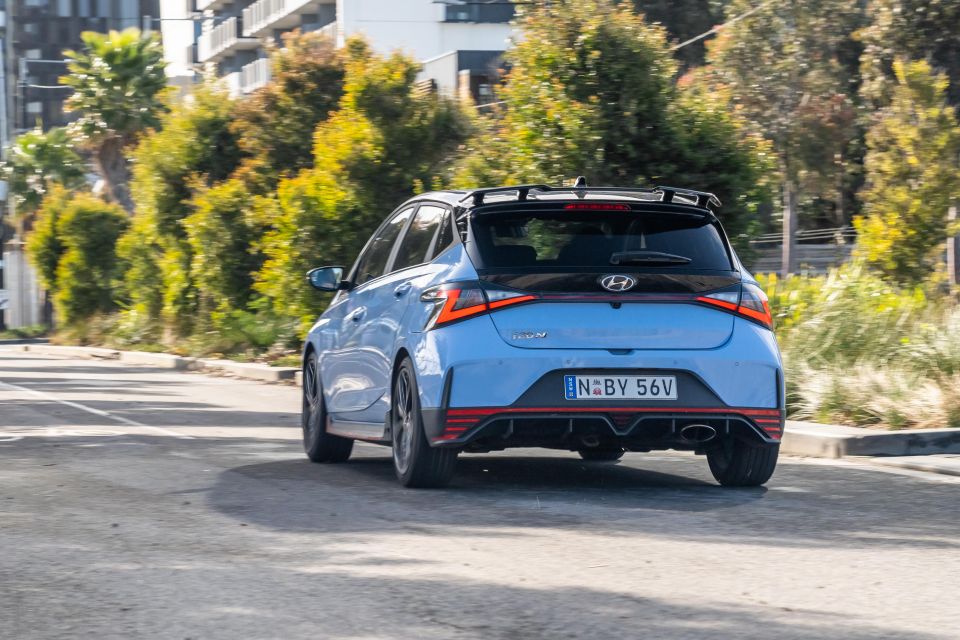
All the controls are super responsive, more so than the Fiesta, to the point where it almost feels like a pint-sized race car for the road.
Part of that is down to the fact the i20 N’s 1.6-litre turbo four gives you max torque from just 1750rpm, as opposed to the FiST’s 4000rpm peak. It gives you more shove earlier on, and all 265Nm is on tap until 4500rpm.
When you’re really gunning it, there’s an overboost function that will reward you with 304Nm between 2000 and 4000rpm under full throttle. No wonder it feels quicker and more eager than the FiST.
It’s also more raw in just about every way. It’s louder, it’s harsher, its that little bit sharper – which to those wanting the most visceral experience, will be worth its weight in gold.
On the twisty mountain roads between Healesville and Myers Creek, the i20 N immediately revealed itself to be the sharper tool for spirited blats, particularly on tighter, technical routes.
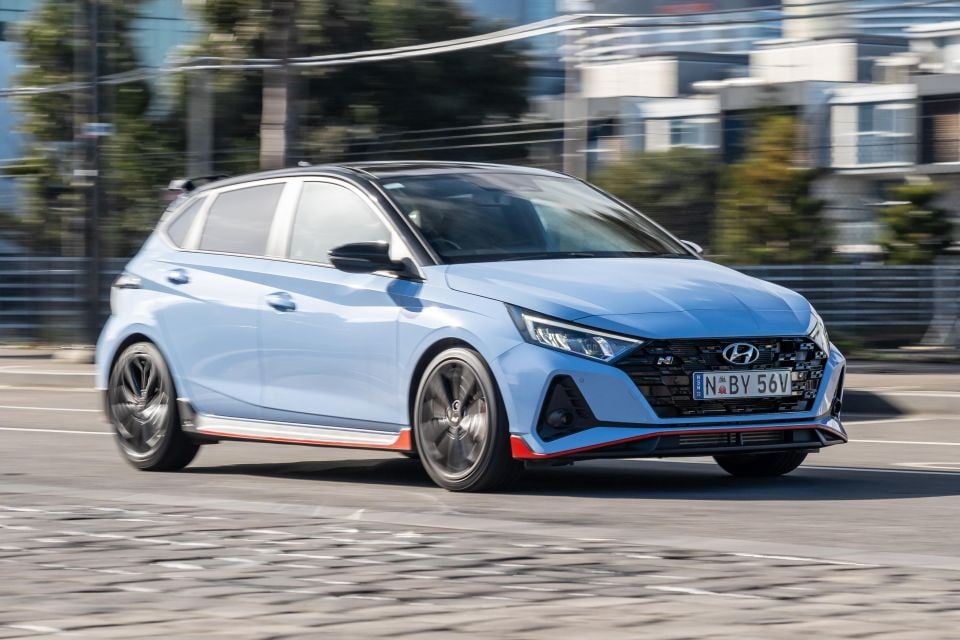
Body roll is almost non-existent, giving you the confidence to push harder than you would in the Fiesta right away.
It really holds on well too, with heaps of grip from those 215/40 R18 Pirelli P-Zero HN tyres, which have been developed specifically with Hyundai to complement the hardcore chassis and suspension setup.
Like the Fiesta, there’s a mechanical LSD on the front axle shuffling torque to the wheel with the most grip, helping to minimise torque steer and understeer.
It all combines to make the i20 a proper compact weapon. The lighter shift action allows you to rifle through ratios, and the wider torque band means you can hold gears for longer. It’ll even rev-match for you when you downshift – and you can also turn it off if you prefer to heel-toe it yourself.
With Scott in tow, I was definitely more confident and quicker in the i20 N than the Fiesta, carrying more speed into corners and pulling harder out of them.
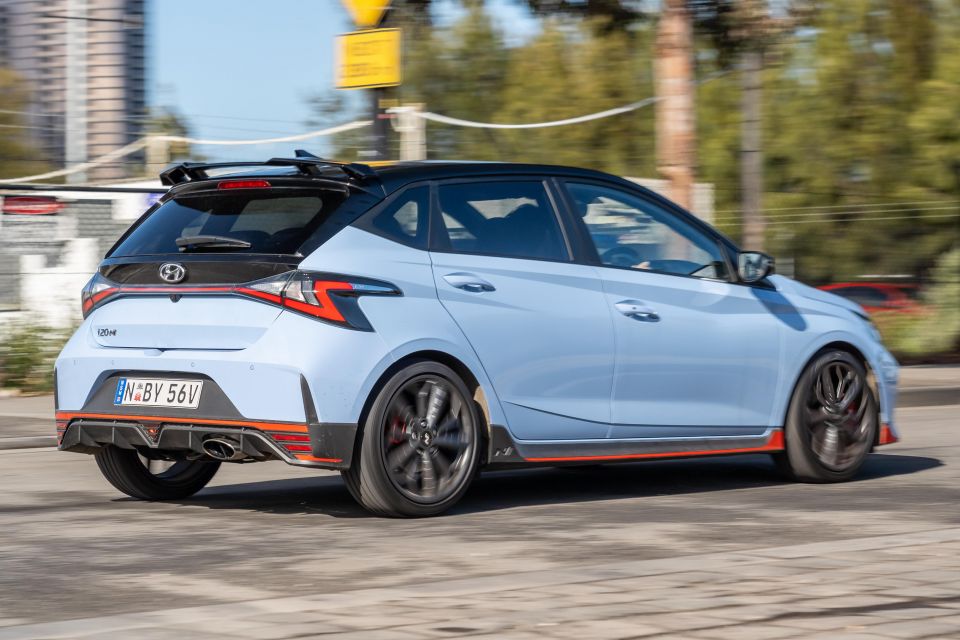
On the transit leg back to base though, the i20 N showed the trade-off to its incredibly focused arsenal.
The ride can be quite harsh at times compared to the Fiesta, and it can jar over sharper hits particularly at the rear. It’s noisier too, both in terms of drivetrain noise and road and wind noise – remember what I said earlier about the FiST having a layer of polish that cocoons you?
Admittedly the Hyundai’s larger footprint and wider stance makes for more confident road-holding on the freeway, not that the Fiesta doesn’t feel secure, but the i20 N feels like a bigger car at over 100 clicks.
The i20 N also has the more fulsome assistance suite, including blind-spot and rear cross-traffic alerts, as well as active lane centring over the Fiesta. As we’ve experienced with other Hyundai models, they all work well too.
Fiesta ST
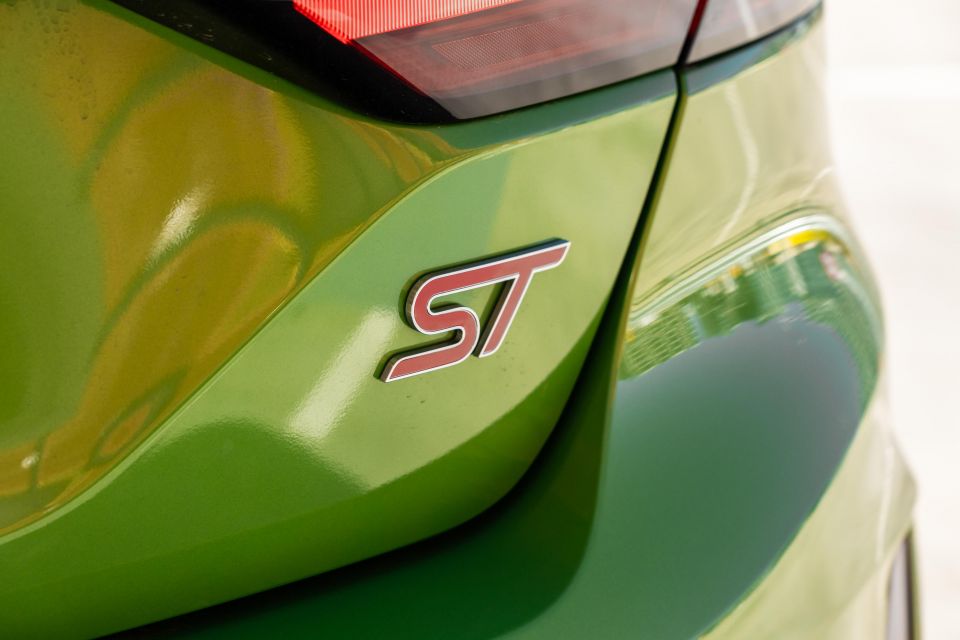
Ford covers its range with a five-year, unlimited-kilometre warranty.
The Fiesta ST requires servicing every 12 months or 15,000km – whichever comes first.
Ford offers four years of capped-price servicing. The first four services have a maximum price of $299.
i20 N
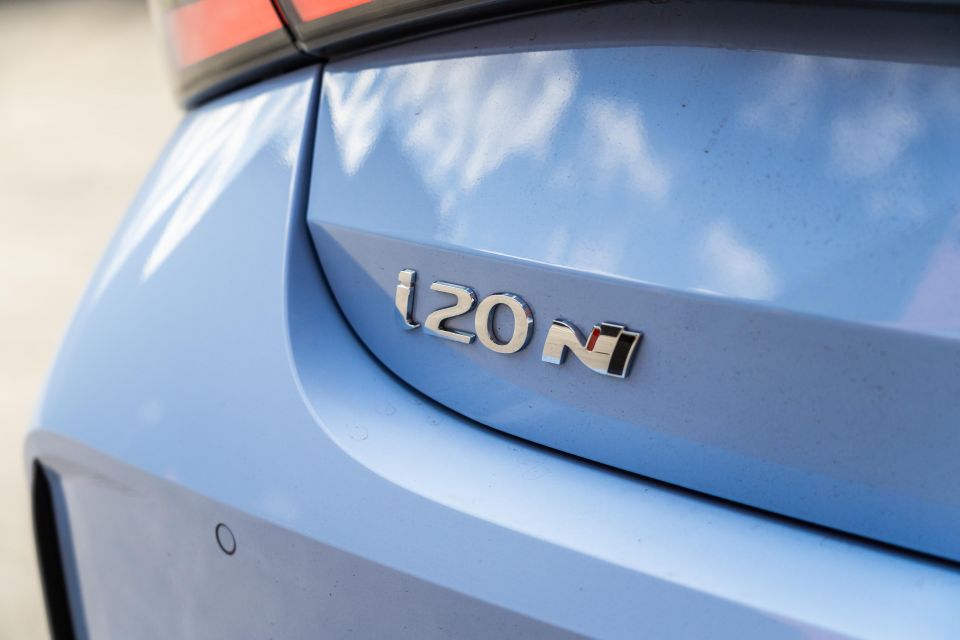
The i20 N is covered by a five-year, unlimited-kilometre warranty.
As with other Hyundai N models, the warranty also includes vehicle use on non-competition track events as well as the use and fitment of track-focused tyres.
Servicing is required every 12 months or 10,000km, whichever comes first. The first five services are capped at $309 a pop.
This one is a tough call – the cars you see here are both excellent choices.

On one hand the Fiesta ST still remains a benchmark in how it balances being a fun daily while also being able to really tear up a winding back road. This final iteration is arguably the most refined and sophisticated yet.
Then you have the i20 N, which is as bonkers as its angular LED tail light bar and big boi rear wing suggests. If you think the FiST isn’t quite hardcore enough, the Hyundai genuinely gives off mini race car vibes.
Which is best for you largely comes down to your personal tastes and preferences.
If you’re like me and like a bit of refinement and polish for everyday use, then the Fiesta ST is the car for you. Conversely, if you want a car that’s raw and loud all the time, the i20 N is a better bet.
Regardless, you’re not getting short changed with either choice. These are easily two of the best bang-for-buck performance cars you can buy. Period. Such a shame the Fiesta has been discontinued and the i20 N is so hard to get.

Click the images for the full gallery
MORE: Everything Ford Fiesta ST MORE: Everything Hyundai i20 N
Share your thoughts with us in the comments below!
James Wong is an automotive journalist and former PR consultant, recognised among Australia’s most prolific motoring writers.
Share your thoughts and write a review of a car you own and get featured on CarExpert.


Matt Campbell
4 Hours Ago


William Stopford
20 Hours Ago


Josh Nevett
21 Hours Ago


Ben Zachariah
2 Days Ago


CarExpert.com.au
2 Days Ago


Damion Smy
2 Days Ago